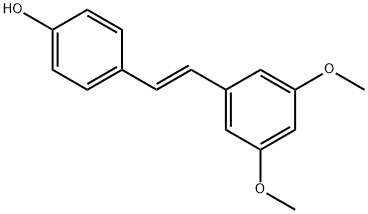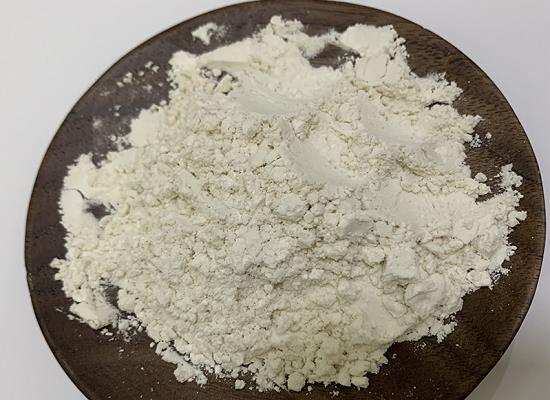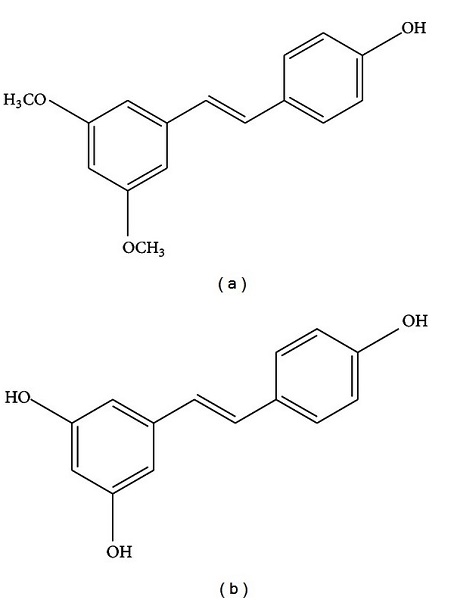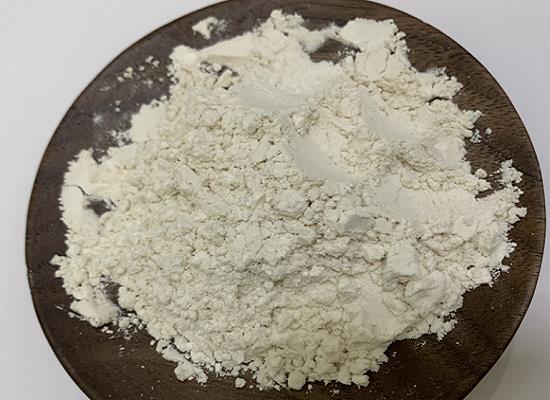The effect and Relevant research of Pterostilbene
Pterostilbene(trans-3,5-dimethoxy-4-hydroxystilbene) is a stilbenoid chemically related to resveratrol.In plants, it serves a defensive phytoalexin role.
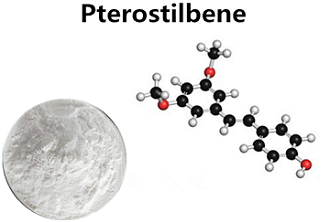
Natural occurrence
Pterostilbene is found in almonds,various Vaccinium berries (including blueberries), grape leaves and vines,and Pterocarpus marsupium heartwood.
Effect
Pterostilbene is a polyphenol, a type of molecule that occurs in plants, particularly small berries and nuts. Blueberries are a particularly rich source of pterostilbene; although it is found in grapes, pterostilbene (unlike its cousin resveratrol) doesn’t survive the wine-making process.
What’s a polyphenol? “Phenol” refers to a certain chemical structure (in this case, a hydroxyl group linked to a benzene ring); “poly” just means the molecules have more than one of the structure. One of polyphenols’ main jobs is to help the plant fight off pathogens. When eaten by humans, polyphenols may serve as powerful antioxidants.
Relevant research
Scientists have been aware of phenols since the early 19th century — Joseph Lister, the pioneer of antiseptic surgery, reported on one phenol’s disinfectant properties in 1867 — though the term “polyphenol” didn’t have its first recorded use until 1894.
As with the rest of polyphenols, researchers don’t fully understand how pterostilbene works. Dr. Jose M. Estrela, a professor of physiology at the University of Valencia (Spain) who has studied pterostilbene says "the good thing is that pterostilbene works, but the bad thing is that we cannot fully explain its potential health benefits with the information that we have.”
Safety and regulation
Pterostilbene is considered to be a corrosive substance, is dangerous upon exposure to the eyes, and is an environmental toxin, especially to aquatic life.
Its chemical relative, resveratrol, received FDA GRAS status in 2007,and approval of synthetic resveratrol as a safe compound by the European Food Safety Authority (EFSA) in 2016.Pterostilbene differs from resveratrol by exhibiting increased bioavailability (80% compared to 20% in resveratrol) due to the presence of two methoxy groups which cause it to exhibit increased lipophilic and oral absorption.
You may like
Related articles And Qustion
See also
Lastest Price from Pterostilbene manufacturers

US $0.00-0.00/kg2025-08-20
- CAS:
- 537-42-8
- Min. Order:
- 1kg
- Purity:
- 99%
- Supply Ability:
- 1

US $0.00/Kg/Bag2025-04-21
- CAS:
- 537-42-8
- Min. Order:
- 1KG
- Purity:
- 99%min HPLC
- Supply Ability:
- 100kgs
